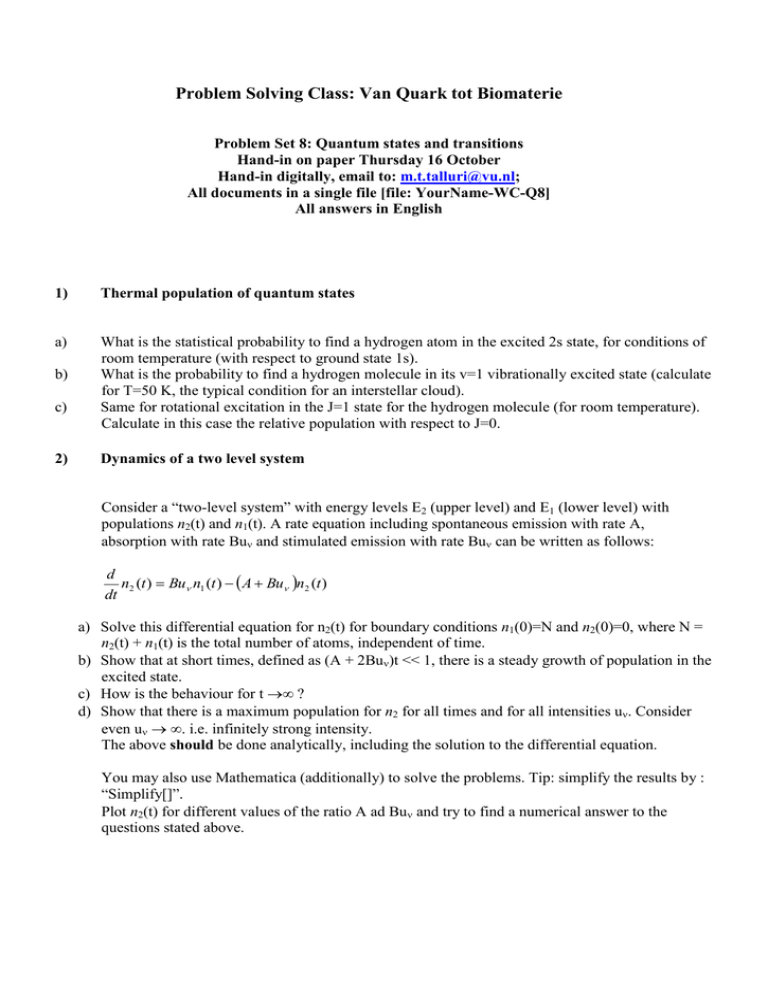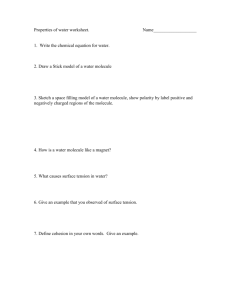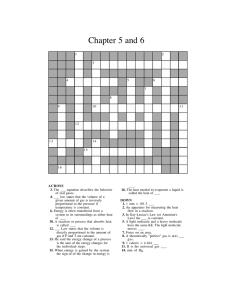Problem Solving Class: Van Quark tot Biomaterie
advertisement

Problem Solving Class: Van Quark tot Biomaterie Problem Set 8: Quantum states and transitions Hand-in on paper Thursday 16 October Hand-in digitally, email to: m.t.talluri@vu.nl; All documents in a single file [file: YourName-WC-Q8] All answers in English 1) Thermal population of quantum states a) What is the statistical probability to find a hydrogen atom in the excited 2s state, for conditions of room temperature (with respect to ground state 1s). What is the probability to find a hydrogen molecule in its v=1 vibrationally excited state (calculate for T=50 K, the typical condition for an interstellar cloud). Same for rotational excitation in the J=1 state for the hydrogen molecule (for room temperature). Calculate in this case the relative population with respect to J=0. b) c) 2) Dynamics of a two level system Consider a “two-level system” with energy levels E2 (upper level) and E1 (lower level) with populations n2(t) and n1(t). A rate equation including spontaneous emission with rate A, absorption with rate Bu and stimulated emission with rate Bu can be written as follows: d n2 (t ) Bu n1 (t ) A Bu n2 (t ) dt a) Solve this differential equation for n2(t) for boundary conditions n1(0)=N and n2(0)=0, where N = n2(t) + n1(t) is the total number of atoms, independent of time. b) Show that at short times, defined as (A + 2Bu)t << 1, there is a steady growth of population in the excited state. c) How is the behaviour for t ? d) Show that there is a maximum population for n2 for all times and for all intensities u. Consider even u . i.e. infinitely strong intensity. The above should be done analytically, including the solution to the differential equation. You may also use Mathematica (additionally) to solve the problems. Tip: simplify the results by : “Simplify[]”. Plot n2(t) for different values of the ratio A ad Bu and try to find a numerical answer to the questions stated above. 3) CO observed in radio astronomy a) Explain why the quantized angular momentum of a rotating molecule can be expressed as: J ( J 1) 2 E( J ) 2I Here I is the moment of inertia (traagheidsmoment) of a rotating di-atomic molecule. Use the property of the angular momentum operator J2 to have eigen values: J ( J 1) 2 . In radio astronomy spectral Lines are observed (in absorption or emission) of the CO (carbon monoxide) molecule making a transition from state J=1 to state J=0. This transition is at f=115.271208 GHz (Gigahertz, or 109 Hz). (h=6.62606957 x 10-34 Js). b) c) Calculate the separation Re between the C-atom and the O-atom in the CO molecule. Use an expression for the reduced mass of the CO molecule (Masses MC = 12 a.m.u; MO = 15.994915 a.m.u., with t 1 a.m.u. (atomic mass unit)= 1.660538921 x 10-27 kilogram.) “Usual” 12C16O molecules consist of 12C and 16O atoms (isotopes). However, in radio astronomy also 12C18O molecules are observed. For the heavy oxygen molecule the mass is MO(18) = 17.999161 a.m.u. Make the assumption that the chemical bond in the 12C18O molecules is the same as for the main isotopomer 12C16O molecule. So assume that Re has the same value for the heavier system. Now calculate the frequency of the transition from J=1 to J=0 in the 12C18O molecule.






